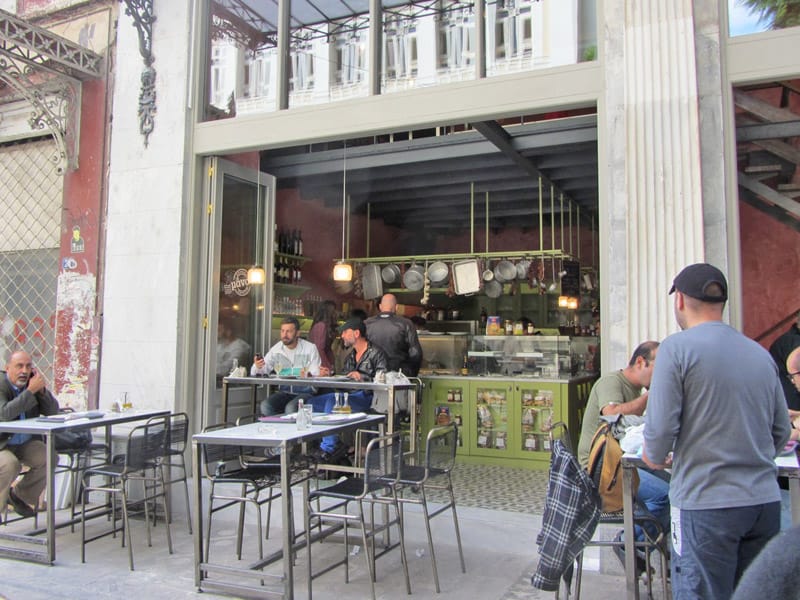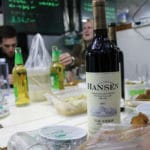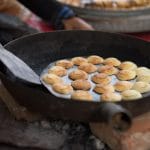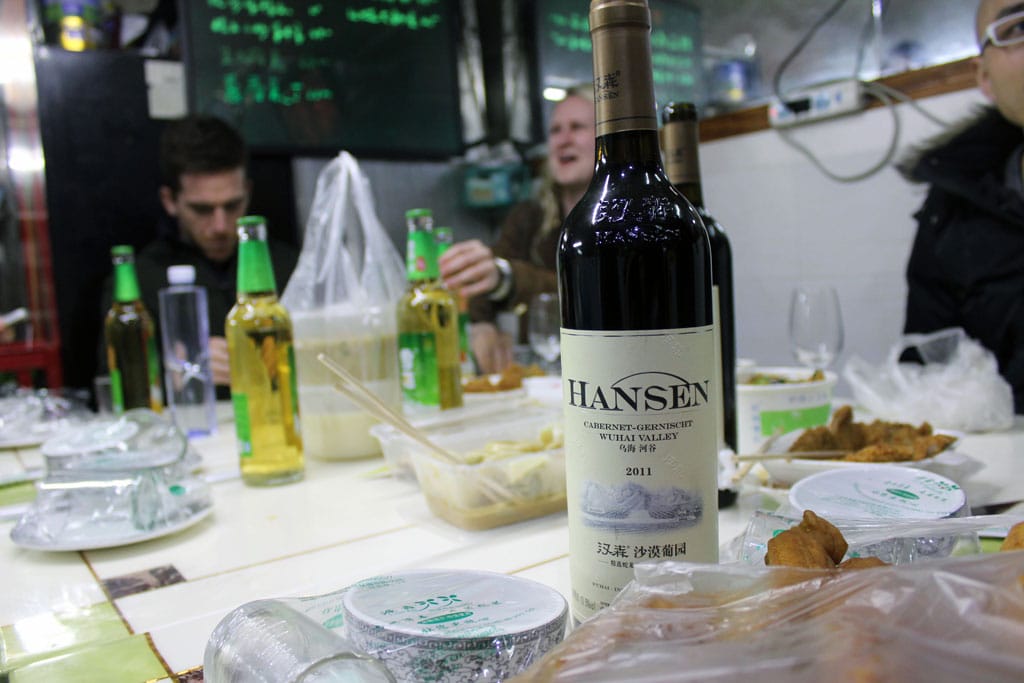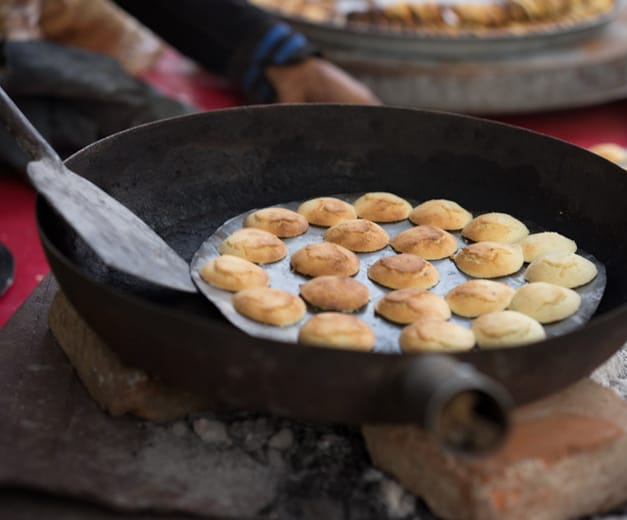Update: This spot is sadly no longer open.
At first you’re puzzled. What a strange name. Why not just call it Manas Kouzina, Mother’s Kitchen, and be done with it? Well, like everything connected with this new Athenian eatery, which opened at the end of August opposite the big butter-colored church dedicated to St. Irene (Agia Eirini) on Aiolou Street, the name was given tremendous thought.
As Stephanos Spathas, who developed the concept, says, “It’s meant to convey the idea of an endangered species, like the sea turtle Caretta caretta. Greece’s traditional foods, the recipes of our mothers and grandmothers from all corners of the country, are vanishing. You have only to look at what’s popular – souvlaki stands and spaghetti houses, not to mention hot dogs, cupcake shops and bakeries by the dozen.
“But look at the logo. What does it remind you of? A post office stamp, no? To me, that’s also a reminder of the habit of Greek mothers of sending cooked food to their kids when they went off to university – by post, by bus and now by DHL.”
We’re sitting outside at one of the high, marble-topped tables on casters, on stools like the kafeneion chairs of 50 years ago. The restaurant proper opens right onto the pedestrian-only street, so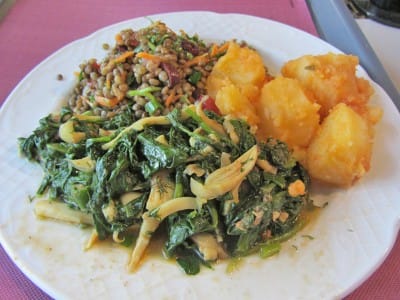 that even a casual passerby might be lured by the sight of more than a dozen baking pans and bowls filled with delicious-looking cooked dishes and salads. He might be attracted by the shiny pots and pans, red peppers and garlic braids dangling above them. Or the lit-up drawers under the counter with loose herbs and spices. Not to mention the smells emanating from the kitchen behind them.
that even a casual passerby might be lured by the sight of more than a dozen baking pans and bowls filled with delicious-looking cooked dishes and salads. He might be attracted by the shiny pots and pans, red peppers and garlic braids dangling above them. Or the lit-up drawers under the counter with loose herbs and spices. Not to mention the smells emanating from the kitchen behind them.
“What I had in mind,” says Stephanos, a 40-something former executive, “was to bring back the old-fashioned mageireio [no-frills restaurants that served delicious, home-cooked meals at very low prices] and give it a new look. My company was a victim of the crisis. I did PR for big multinationals for 16 years. But when it closed down, I didn’t want to stay in the same field, and as the food world has not been as affected by the slump, I decided to go back to our roots and bring back the delicious, genuine dishes that are being forgotten, while keeping the quality high and the prices low.”
Manas Kouzina Kouzina rests on one basic principle: all the products in the shop are Greek. This may come as a shock to Coke or Heineken fans, but they can choose from a range of domestic soft drinks and beers from local microbreweries, as well as wines from small wineries. None of the ingredients are imported, either, and as for the coffee, it comes from a firm in Sparta that has been blending it for three generations. In addition, the vegetables are seasonal; you won’t find artichokes in October or pumpkin in April. As Stephanos says, his aim is to help small producers reestablish themselves. He and his team are constantly adding new dishes to the repertoire – from home cooks, old notebooks and their travels, too, so there’s little danger of repetition if you go back again and again.
Each day’s dishes represent a sampling of regional specialties you don’t usually find on the same menu. When I had lunch there with friends we had a tough time choosing from among Corfiot sofrito and pastitsada, eggplant fritters from Arcadia, Cretan cuttlefish with spinach, stuffed peppers from Domokos, caper salad from Sifnos, eggplant yiouvetsi (orzo casserole) from Naxos, two types of roast potatoes, chicken and 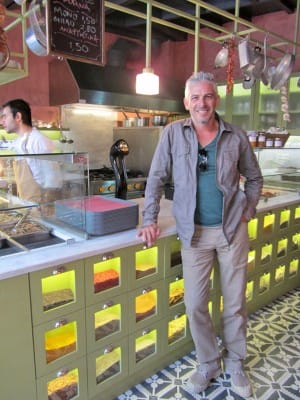 more. Everything looked so yummy, we just shared and more or less tasted everything, leaving nothing for the pigeons. And we didn’t even have room for the traditional sweets prepared every morning.
more. Everything looked so yummy, we just shared and more or less tasted everything, leaving nothing for the pigeons. And we didn’t even have room for the traditional sweets prepared every morning.
But even if you’re alone, you don’t have to choose. Three plate sizes are available, for €2.80, €5 or €7.80, so you can have as many as three scrumptious dishes. And the helpings are extra generous. You simply point to the food you want, pay the cashier, and then take your plate on a tray out to your table. When the weather gets colder and rainier, you’ll be sheltered by awnings and warmed by heaters.
Manas Kouzina Kouzina takes the term “all-day restaurant” to new heights, too. The cooks start work by 6 a.m.; they open for breakfast at 8 a.m. and serve meals until 11 p.m.; and on weekends they stay up until 1 or 2 a.m., providing snacks to go with ouzo, tsipouro or wine for night owls (in their cozy room above the kitchen). Sundays are different, with a brunch menu and drinks and mezedes beginning at 6 p.m.
Funnily, this “Mama’s Kitchen” involves no actual mother. Instead, it’s a father-and-son team. Stephanos drew on his business experience and developed the concept, but he leaves it to his 23-year-old son, Yannis, to run it.
“Women complicate things,” laughs Stephanos.
But watch this space. Aiolou Street is changing fast. On one side of the restaurant, you might see a dumpster, but the other is the newly restored pink and ivory façade of the vintage (1900) Emborikon Hotel, which in another two years will reopen as a 12-room boutique hotel. Meanwhile, Ag. Irini Square has already become one of the city’s most welcoming, agreeable places to meet for a meal, a coffee or a drink. And Manas Kouzina Kouzina has just made it more so.
Published on November 20, 2013
Related stories
January 23, 2017
ShanghaiDon’t tell it to French winemakers, but in 2015, the Chinese wine industry hit a major milestone by narrowly surpassing France in land dedicated to vineyards. With 7,990 square kilometers of grape-growing land concentrated mostly in China’s north-central and northwestern regions, the country now ranks second only to Spain and holds almost 11 percent of…
February 25, 2015
DelhiOld Delhi overflows with recent – and not so recent – migrants who have left a rural farming life. Over 55 percent of India’s workforce, in fact, is engaged in some aspect of agriculture. And 80 percent of the farm holdings nationwide are below 2 hectares. Many migrant laborers, former farmers, hail from the surrounding…
May 17, 2013
Mexico City | By Ben Herrera
Mexico CityThe sap of the spiky maguey plant has long been used by the indigenous peoples of Mexico to prepare pulque, a milk-colored, viscous drink that has roughly the same alcohol content as beer. When they arrived in Mexico, the Spanish were introduced to pulque. Used to imbibing harder stuff, however, the conquistadors experimented with distilling…







































